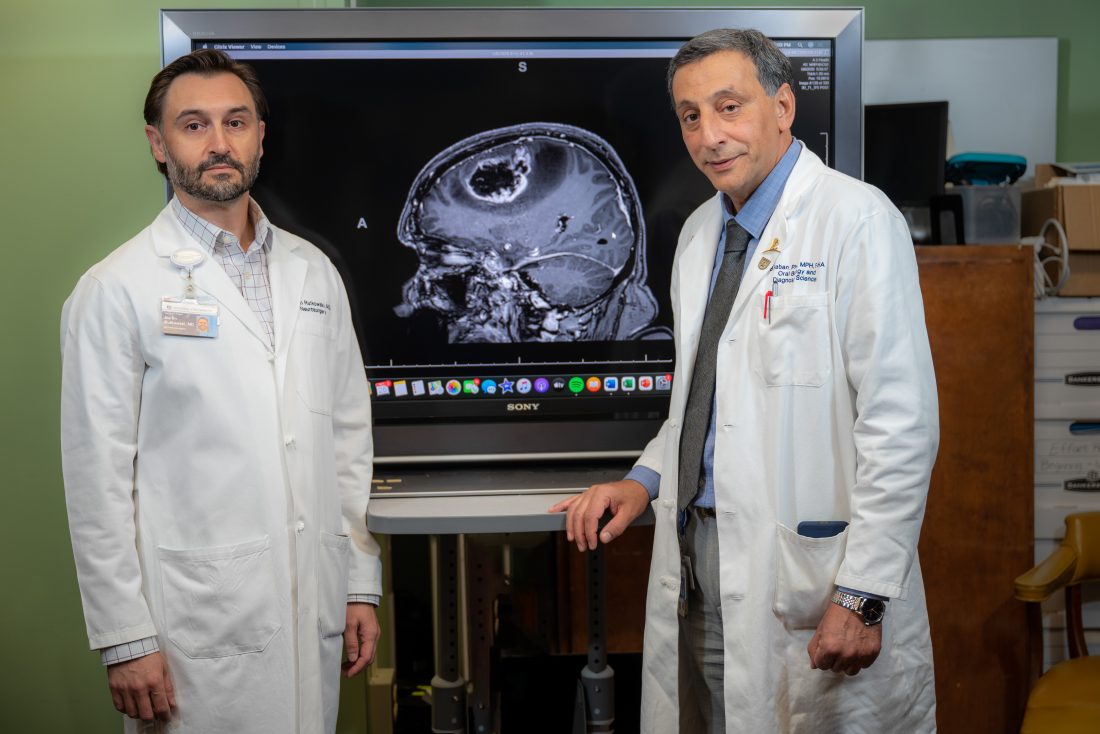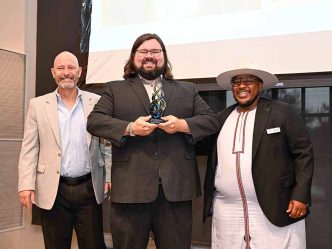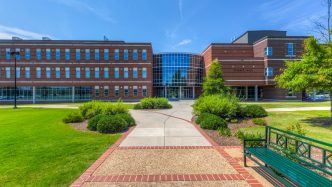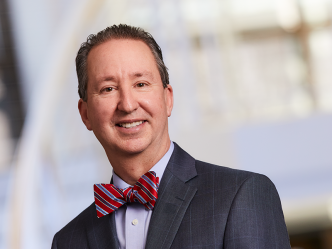Inhaled CBD shrinks the size of the highly aggressive, lethal brain tumor glioblastoma in an animal model by reducing the essential support of its microenvironment, researchers report.
“We saw a significant reduction in the size of the tumor and its microenvironment was different,” Dr. Babak Baban, immunologist and associate dean for research at the Dental College of Georgia at Augusta University says, after only seven days of treatment.
Researchers at DCG and the Medical College of Georgia say that the inhaler approach not only helped ensure the compound found in cannabis reached the brain, but that the method of delivery could, much like asthma inhalers, eventually be easily used by patients.
It was the first study to use CBD in an animal model of glioblastoma, they report in the journal Cannabis and Cannabinoid Research.
Using modified glioblastoma cells from humans, they created what is called an orthotopic glioblastoma model, to provide the most realistic model they could for this most common and lethal malignant brain tumor. By day eight the aggressive tumor was established in the brain of the mice, and at day 9 they started giving daily doses of inhaled CBD or a placebo that continued for seven days. They then looked again at an image of the tumor and directly at the tumor tissue.
While the approach is likely easily applicable to humans, at this juncture they are looking primarily at the biological response of the tumor to CBD, says Dr. Martin Rutkowski, MCG neurosurgeon whose expertise includes operating on these patients who tend to present after a seizure or sudden loss of consciousness, or with slower onset of neurological deficits like a weak arm, vision or cognitive problems.
“It’s probably one of the most aggressive cancers period. We are in desperate need of research and more treatments,” the neurosurgeon and study coauthor says. ”What we have right now is not working very well,” he says.
“Family members will bring patients in and say they are just not thinking right, that their memory is all over the place, or that they got fired from their job because they are no longer doing things right that they have been doing for 30 years,” Rutkowski says.
Today’s treatment includes surgery, followed by chemotherapy and radiation therapy. “Surgery does not offer a cure but it does offer an important first step in maximizing quality of life and prognosis,” Rutkowski says, noting there is a clear relationship between the amount of tumor that can be removed surgically and the length of survival.
They found that CBD appears adept at altering the tumor’s ecosystem, or supportive tumor microenvironment, including restoring levels of inflammation that target rather than protect the glioblastoma, which could make it a safe, effective and novel adjunct therapy for these patients.
“It is about immune balance,” says Baban, corresponding author. Inflammation is heightened in response to a frontline attack on a tumor, which is a normal response; in fact our immune system is regularly attacking cancerous or precancerous cells. But when a tumor manages to become established, the tumor takes charge, switching to producing a state of more chronic inflammation that ultimately protects it from the immune system, he says.
The tumor microenvironment established by the cancer cells, includes things like immune cells as well as blood vessels and growth factors to enable more blood vessel growth, which is key to tumor growth and survival, enabling it to thrive where it starts and to spread.
For a glioblastoma, the tumor microenvironment has been shown to have increased activity of natural immune checkpoints, which as their name implies, helps prevent an overzealous immune response that could hurt the body, like what happens in autoimmune diseases like rheumatoid arthritis. But in this case the damping down means protecting the tumor. There also is a notably small presence of cytotoxic T cells, which are particularly adept at putting a tumor or other invader in the crosshairs.
CBD was able to improve the immune mix against the tumor including reducing the tumor’s coopting of glial cells — a brain cell type that normally protects neurons, including producing inflammation to fight invaders — into instead becoming a major component of the tumor, now called a glioblastoma associated macrophage, which helps support and protect it.
It also suppressed the protein P-selectin, which typically plays a role in important functions like injury repair, and one of the things it recruits to help is platelets. However in cancer, P-selectin helps tumors spread and be treatment resistant, in fact it’s a focus for new cancer treatments. Like many other inhabitants of the microenvironment, there is some evidence one way P-selectin works for tumors is by also serving as an immune checkpoint.
Apelin, a pervasive enzyme made by a lot of different cell types, is normally present at low levels in the brain. But in glioblastoma its expression is much higher, the researchers say, and it supports critical blood vessel growth, in addition to promoting the cancer stem cells thought to birth the tumor as well as being key to the tumor’s resistance to treatment. There also is evidence that apelin functions as an immune checkpoint in the tumor microenvironment, and others have shown that inhibiting apelin, which CBD does, decreases the growth rate of the deadly brain tumor.
CBD also suppresses IL-8, which macrophages normally release to promote inflammation and aid injury repair, and which recruits other immune cells in the process. But glioblastoma also secretes IL-8 to help promote cell migration and angiogenesis and its level has been shown to be high in many cancers, including glioblastoma. In fact, these fast-growing tumors are good at growing blood vessels, which in turn support their growth, and drugs that target this specific skill have been shown to help.
CBD also reduces other key immune checkpoints, like the enzyme indoleamine 2,3 dioxygenase, or IDO, another localized blockade to the immune response that tumors are known to use.
CBD also improved the mix by increasing expression of some good things, like CD103, a complex thought to help the immune system recognize cancer, and that is generally associated with a better cancer prognosis, as well as CD8, a sugar-coated protein that also aids an immune response. There is evidence suppressing immune checkpoints, which CBD does, drives levels of both up.
“It is a puzzle and that is why we need good immune regulators,” Baban says. “CBD is a very smart regulator,” that can make adjustments based on its environment, like turning apelin down in glioblastoma and up in the face of lungs damaged by COVID, he says. DCG and MCG investigators reported last year that CBD actually increases levels of apelin, which they have shown go way down with a SARS-CoV-2 infection, and in that scenario the apelin increase reduces inflammation and the “cytokine storm” that has wreaked destruction in the lungs of patients.
“Right now we are excited that the tumor shrinks,” Baban says of the cannabinoid’s impact in glioblastoma. He and Rutkowski note that the positive results from inhaled CBD occurred without being done in tandem with other therapies, like surgery. They anticipate if CBD is eventually used for these patients, it will be a novel adjunct to these therapies.
Next steps include seeing how long the positive changes last and looking further at the impact on cancer stem cells. They also want to assess CBD’s impact on the high recurrence rates of glioblastoma. They have more evidence for hope: In an earlier study they incubated the tumor cells in CBD before implantation, and no tumors resulted, Baban says.
The latest significant advance in treating glioblastoma came more than 15 years ago, with the addition of the chemotherapy drug temozolamide to radiation, which extended survival about one and one half months and was celebrated by patients and caregivers alike, Rutkowski says.
CBD’s skill at controlling inflammation, and their research experience with other conditions where inflammation is key, including Alzheimer’s, led Baban and his colleagues to pursue the cannabis derivative for glioblastoma. Other researchers are looking at CBD in combination with other cannabis derivatives, including THC, but because CBD is such an interactive compound, including with other active compounds in cannabis, like THC, the DCG and MCG researchers thought it would be more effective alone.
Read the full study.
 Augusta University
Augusta University




